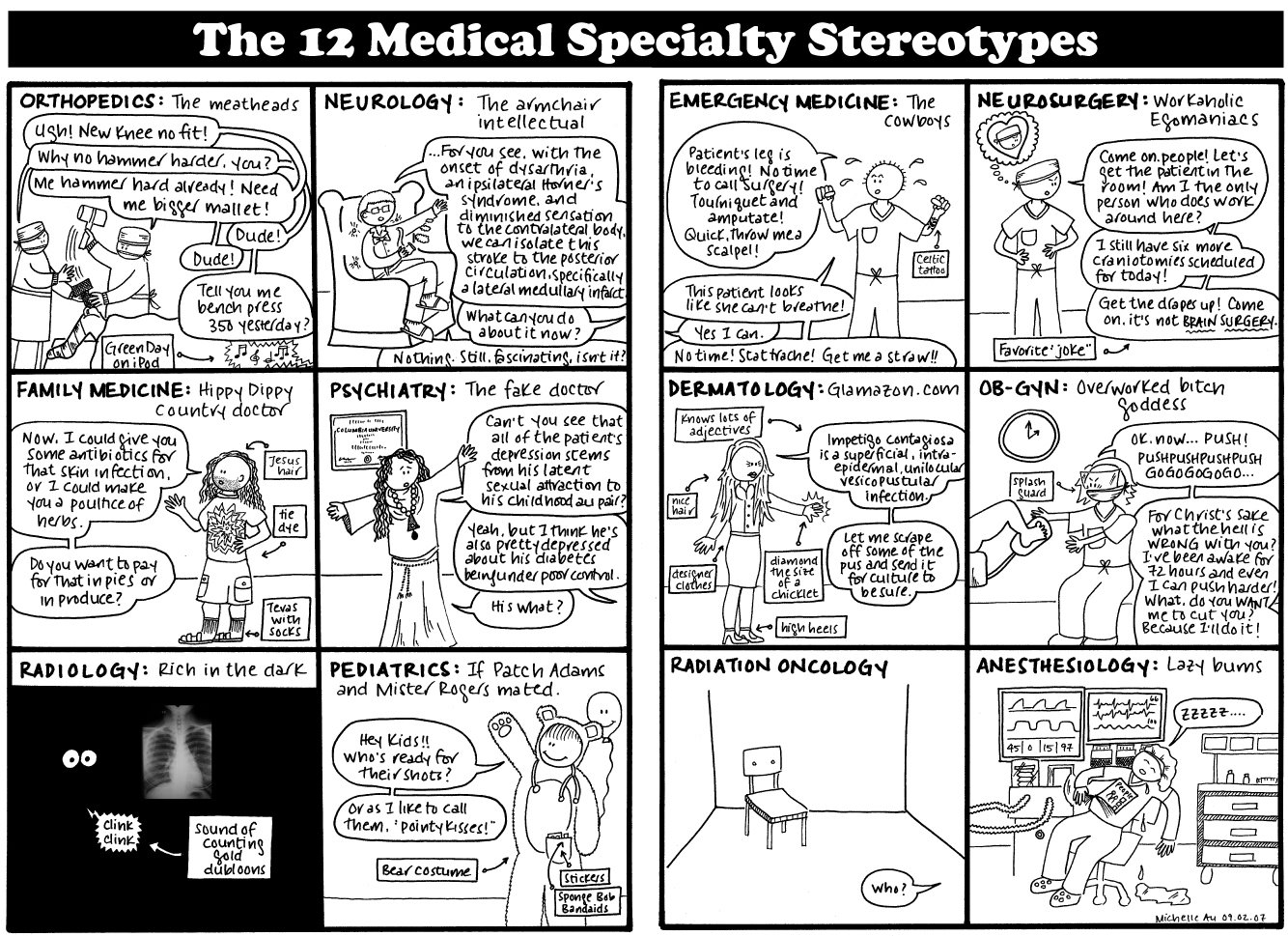Nationality: Caucasian, German-American
Age: 52
Occupation: Orthopedic surgeon
Residence: New Orleans, LA
Performance Date: 3/24/13
Primary Language: English
Language: German, Spanish
My informant is an orthopedic surgeon, who was born in Hawaii, lived in Texas, Long Beach California, and Virginia Beach. He is also in the Army Reserves. My informant now works in New Orleans, Louisiana. Over lunch with my informant we were talking about occupational folklore and stereotypes, which led into a conversation about stereotypes of different types of doctors brought up the saying, “strong as an ox and twice as smart.” The conversation is as follows:
I: The stereotype of orthopedic surgeons is that they are strong as an ox and twice as smart.
Person 1: I thought it was half as smart
Person 2: Yeah, I think that’s how it actually is
I: Well at Yale we said twice as smart but we were Yale residents. There was actually a journal article called, “Strong as an Ox and Half as Smart” investigating this. They compared test scores of orthopedic surgeons and anesthesiologists and orthopedic surgeons were higher than everyone else.
This conversation shows two different versions of essentially the same proverb, and how things can be modified and passed down. However, my informant who is a surgeon, passed down the version where surgeons were “twice as smart,” while the other people involved in the conversation had heard the version where they were “half as smart.” I had never heard either of these stereotypes before, but it is interesting that my informant carried the altered version of the saying that displays his profession in a more positive life. I looked up the scientific research paper, entitled “Twice as Strong as an Ox and Half as Smart” by Subramanian et al. and it does conclude that orthopedic surgeons are twice as smart. I have attached a link to the abstract for the scientific paper and also an image displaying the various stereotypes of different types of doctors. My informant first heard this stereotype from a fellow med student who was also a surgeon. My informant says he does not tell people this saying as a way of gloating, but just as a joke when with friends. He tells it as affirmation of how strong and smart he is, but he also just likes to joke around when with other doctors who are not surgeons. My other two informants who heard the opposite version, don’t remember where they heard it and it seemed to be something that they have always known. This occupational lore seems to come up among people in the medical profession. Doctors in different fields know the stereotypes and are able to make fun of each other and joke around while in med school or in the workplace. I have found this stereotype to be surprisingly true, my informant loves doing anything athletic, competes in triathlons, and is always trying to fix things that may be broken such as appliances. This fits the stereotype that surgeons are very strong, but I have not found the half as smart part to be true.
Annotation: the study found that the proverb should actually be that surgeons are twice as smart as an ox, once further research is done into the IQ of an ox. This journal article was published by the Journal of Bone and Joint Surgery, but may have been somewhat biased.
Citation:
Subramanian, P., et al. “ORTHOPAEDIC SURGEONS–TWICE AS STRONG AS AN OX AND HALF AS SMART.” Journal of Bone & Joint Surgery, British Volume 94.SUPP XXXIV (2012): 5-5.
http://www.bjjprocs.boneandjoint.org.uk/content/94-B/SUPP_XXXIV/5.abstract


